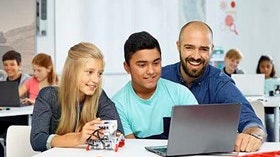Homepage
•
Learning Library
•
Blog
•
Uncommon core: Refining key practices through STEM
Expand breadcrumbs
Expand breadcrumbs
- Learning Library
- Blog
- Uncommon core: Refining key practices through STEM
- Homepage
- •
- Learning Library
- •
- Blog
- •
- Uncommon core: Refining key practices through STEM
Uncommon core: Refining key practices through STEM
By Jon Bishop
May 1, 2017








